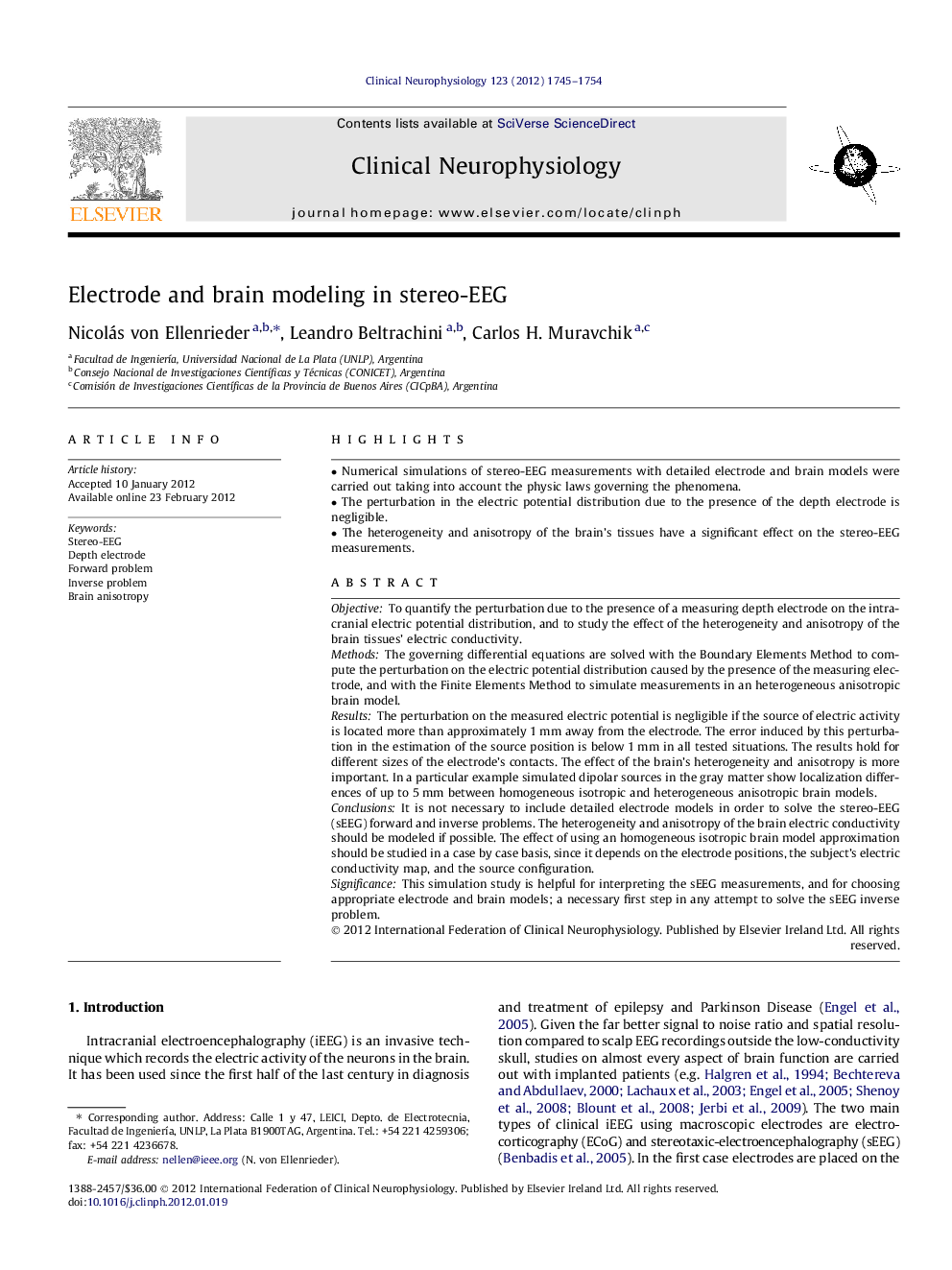| کد مقاله | کد نشریه | سال انتشار | مقاله انگلیسی | نسخه تمام متن |
|---|---|---|---|---|
| 6008769 | 1185009 | 2012 | 10 صفحه PDF | دانلود رایگان |

ObjectiveTo quantify the perturbation due to the presence of a measuring depth electrode on the intracranial electric potential distribution, and to study the effect of the heterogeneity and anisotropy of the brain tissues' electric conductivity.MethodsThe governing differential equations are solved with the Boundary Elements Method to compute the perturbation on the electric potential distribution caused by the presence of the measuring electrode, and with the Finite Elements Method to simulate measurements in an heterogeneous anisotropic brain model.ResultsThe perturbation on the measured electric potential is negligible if the source of electric activity is located more than approximately 1Â mm away from the electrode. The error induced by this perturbation in the estimation of the source position is below 1Â mm in all tested situations. The results hold for different sizes of the electrode's contacts. The effect of the brain's heterogeneity and anisotropy is more important. In a particular example simulated dipolar sources in the gray matter show localization differences of up to 5Â mm between homogeneous isotropic and heterogeneous anisotropic brain models.ConclusionsIt is not necessary to include detailed electrode models in order to solve the stereo-EEG (sEEG) forward and inverse problems. The heterogeneity and anisotropy of the brain electric conductivity should be modeled if possible. The effect of using an homogeneous isotropic brain model approximation should be studied in a case by case basis, since it depends on the electrode positions, the subject's electric conductivity map, and the source configuration.SignificanceThis simulation study is helpful for interpreting the sEEG measurements, and for choosing appropriate electrode and brain models; a necessary first step in any attempt to solve the sEEG inverse problem.
⺠Numerical simulations of stereo-EEG measurements with detailed electrode and brain models were carried out taking into account the physic laws governing the phenomena. ⺠The perturbation in the electric potential distribution due to the presence of the depth electrode is negligible. ⺠The heterogeneity and anisotropy of the brain's tissues have a significant effect on the stereo-EEG measurements.
Journal: Clinical Neurophysiology - Volume 123, Issue 9, September 2012, Pages 1745-1754